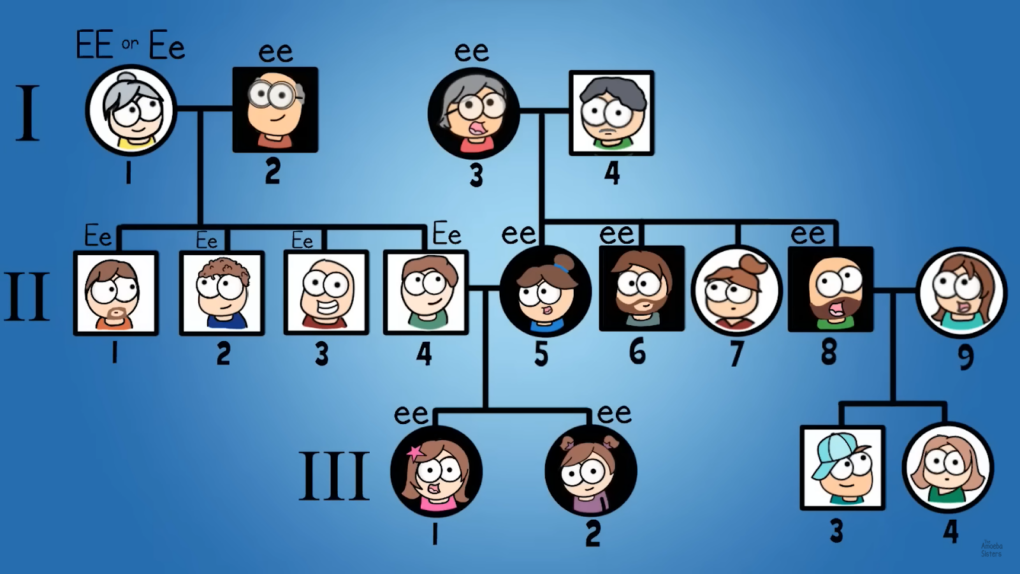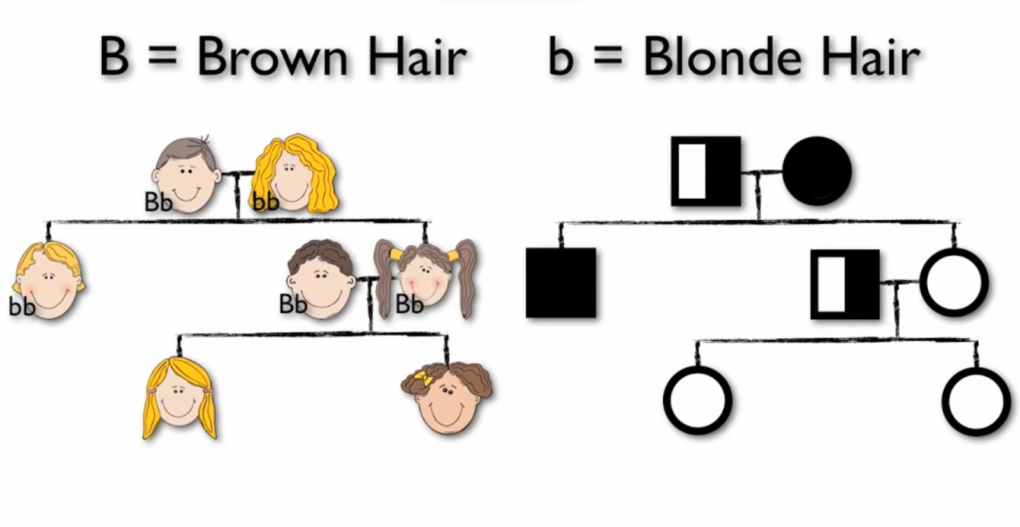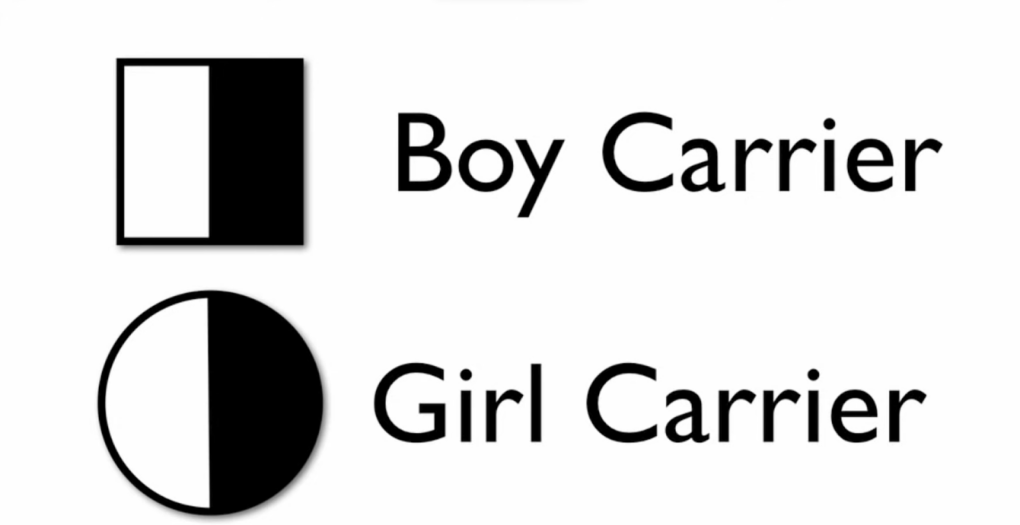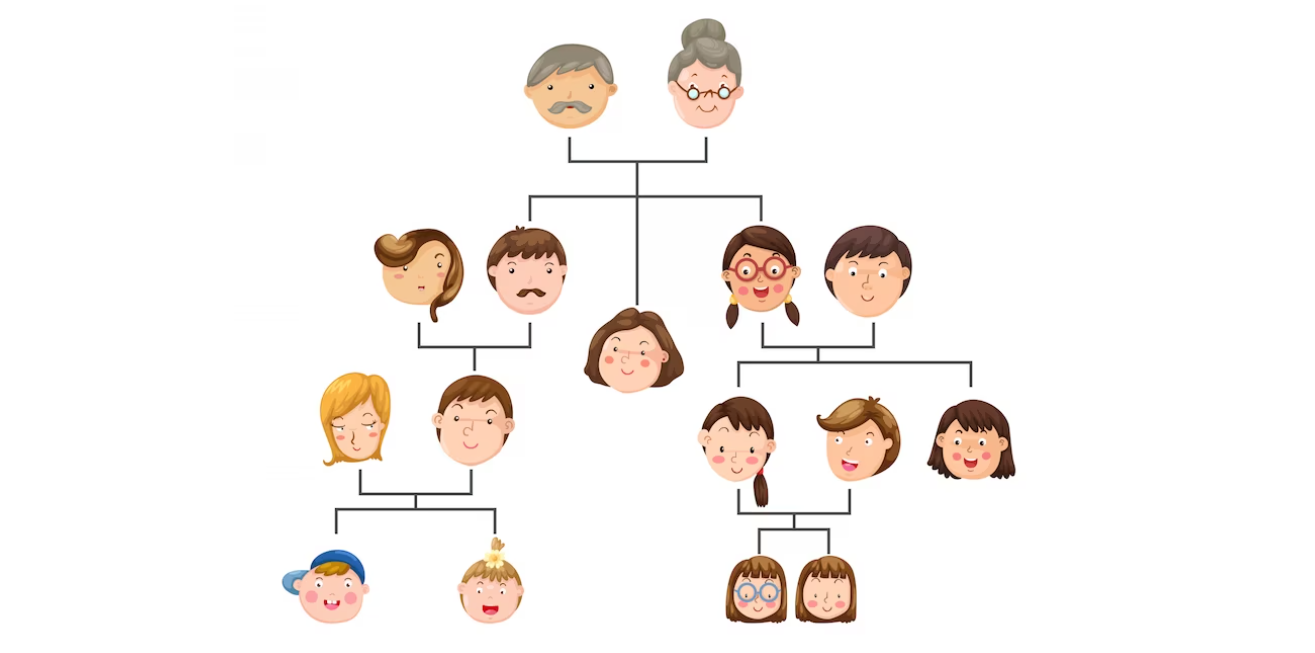When preparing to print your family tree, the choice of chart becomes crucial. Among the most common and early encountered genealogy charts is the pedigree chart. However, it’s essential to explore how it sets itself apart from other chart types and understand the benefits of using various genealogy charts. Let’s delve into the different chart types in genealogy and how they aid in managing the complexities of your familial connections.
Types of Genealogy Charts
In the world of genealogy, numerous chart types and views exist, yet they all center around the same fundamental information. Family tree charts generally fall into three categories:
- Ancestor charts;
- Descendant charts;
- A mix of both.
While some charts provide intricate details, others remain straightforward, and occasionally, they present identical information but with varying perspectives. Grasping the purpose of these charts and finding the most suitable view can aid you in selecting the one that best fits your needs. Here are some of the primary charts and styles you may come across.
| Chart Type | Description |
|---|---|
| Pedigree Chart | A traditional chart that traces a person’s direct ancestors in a hierarchical format, depicting parents, grandparents, and so on. |
| Descendants Chart | Begins with a couple and expands to include all their descendants in subsequent generations, showcasing the family’s growth. |
| Fan Chart | Displays genealogical information in a fan-shaped view, offering a separate look at paternal and maternal ancestors. |
| Hourglass Chart | Shows both the ancestors and descendants of a selected individual on one chart, arranged in a vertical hourglass-like shape. |
| Bow-Tie Chart | Similar to the hourglass chart, but presented in a horizontal bow-tie shape, useful for showcasing a common ancestor’s lineage. |
Pedigree Charts

Pedigree charts serve as invaluable aids in genealogy, providing a coherent lineage of your direct ancestors throughout history. The chart commences with your or a chosen relative’s information and then traces backward, systematically incorporating parents, grandparents, and great-grandparents. Notably, pedigree charts concentrate solely on ancestors and exclude data about siblings, aunts, uncles, nieces, or nephews. These charts, also known as ancestor charts or lineage charts, come in both horizontal and vertical formats, making them versatile tools for mapping your family’s ancestral journey.
Descendants Chart
A descendants chart sets itself apart from a pedigree chart by commencing with a couple as the focal point, rather than an individual, and then proceeds chronologically from the past to the present day. It outlines every generation of descendants stemming from this couple, encompassing their children, grandchildren, great-grandchildren, and so forth until it arrives at the present generation, which includes you. As you expand this chart, it may become rather overwhelming due to the larger family sizes prevalent in the past, in contrast to the smaller families typically found in contemporary times.
Fan Chart
A fan chart represents a distinct format of a pedigree chart, presented in a visually appealing fan-shaped view. It contains the same genealogical information found in traditional pedigree or ancestor charts but provides the viewer with a clearer and separate view of both paternal and maternal ancestors. Fan charts offer flexibility in their presentation, as they can be created in quarter, half, full, or split views, allowing for a comprehensive display of different branches within a family, often color-coded for easy differentiation.

Hourglass and Bow-tie Charts
Hourglass charts offer a unique way to highlight a single ancestor by creating a comprehensive chart that combines both their ancestors and descendants on a single visual display. The chosen ancestor takes center stage, and the chart takes on the distinctive shape of an hourglass, with ancestors depicted above and descendants below them on the page. Conversely, bow-tie charts share a similar concept but in a horizontal format, resembling a bow-tie, with the selected ancestor at the core.
These charts prove especially valuable for family reunions centered around a common ancestor, as they present a clear and captivating representation of the ancestral lineage and the extended family. By visualizing the connections between generations and branches, hourglass and bow-tie charts bring family histories to life, fostering a sense of unity and shared heritage among family members. Whether displayed in traditional or digital formats, these charts serve as cherished tools for understanding and celebrating the rich tapestry of our family roots.

Genealogy Family Tree Chart Software
If you are engaged in genealogy research and data management, it’s likely that your genealogy software already includes family tree charting capabilities. However, if you don’t have access to such features, there are free options available online. Each software program comes with its unique array of options, views, and styles, so it’s a good idea to experiment with multiple tools before settling on one that suits you best. Personal preferences vary, so what might be ideal for me may not be the perfect fit for you. Take the time to explore these tools and have some fun; you might just stumble upon something that resonates with your needs and preferences.
Conclusion
Pedigree charts serve as invaluable tools in genealogy, providing a clear and organized representation of a person’s ancestral lineage. These charts offer a systematic way to trace family connections, allowing researchers to document and understand their familial heritage across multiple generations. With each branch and generation carefully laid out, pedigree charts facilitate the identification of inherited traits, genetic patterns, and potential health risks within a family.
Whether used for personal genealogical pursuits or in professional research, pedigree charts play a crucial role in preserving and sharing our family histories. They not only help us appreciate our roots and cultural heritage but also create a sense of connection with our ancestors and a better understanding of our place in the larger tapestry of human history.
As technology continues to advance, digital pedigree charting tools have made the process of creating, updating, and sharing these charts easier and more accessible than ever before. By utilizing these resources and delving into our family histories, we can uncover fascinating stories of resilience, triumphs, and challenges faced by our ancestors. Ultimately, the pedigree chart serves as a powerful reminder that our identities are intricately intertwined with the lives of those who came before us, enriching our lives with a profound appreciation for our shared human journey.
